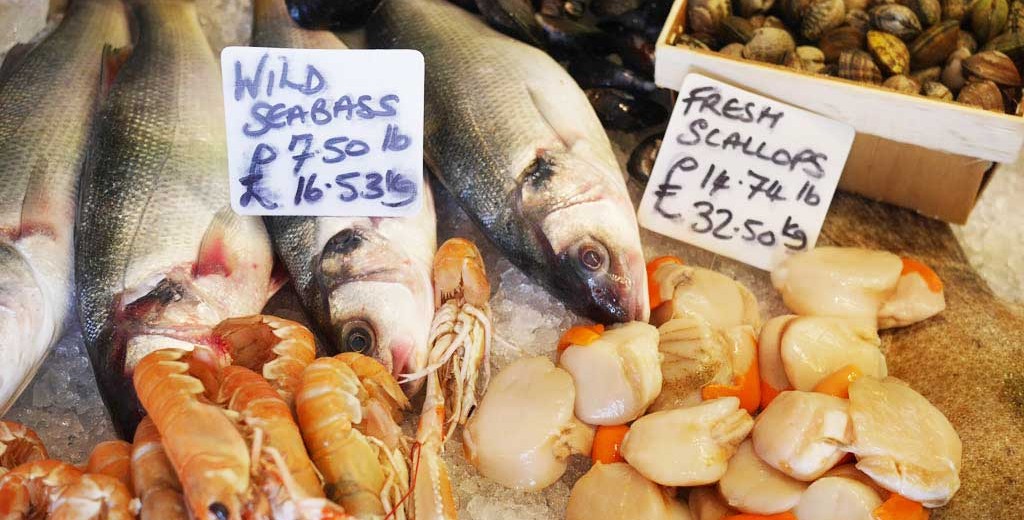How to choose the best fish
Selecting the freshest fish is easy when you know what to look for, says Billingsgate Seafood Training School CEO and award-winning food writer CJ Jackson.

Colour: Fresh fish should have nice bright vibrant colours.
Eyes: Bright and almost reflective, slightly convex in appearance with a clear cornea. Fish that is losing condition will have cloudy sunken eyes.
Gills: On a fresh fish these should be bright, ranging from a delicate pink to a deep claret red. These will have a stronger smell than other areas of the fish, but should still smell fresh. Fish that is losing condition may have purple or brown gills with a sticky mucous appearance. They will probably also have an unpleasant smell.
Firm flesh: Very fresh fish may still be in rigor mortis (ie, stiff as a board) indicating that they have been stored correctly and/or have not been out of water for more than 24 to 36 hours. Oil-rich species including mackerel, herring, sardines and sprats are often sold at the market in this state – an excellent choice. Farmed fish that are harvested to order and arrive at the market ungutted will often still be in rigor mortis too. Avoid fish that are soft to the touch, and if the belly of ungutted fish is split. Even after rigor mortis has past, fish should still be firm to the touch, except for hake which is naturally soft.
Smell: Most fresh fish will have little or no aroma, and that will smell fresh: of sea ozone, cut grass or herbs, or a rich oily smell in the case of mackerel, herring and other oil-rich species. Fish that is losing condition will smell sour and unpleasant. In the worst-case scenario some fish such as skate will smell of ammonia: avoid.
Sheen and slime: Fresh fish should have an opalescent sheen. Avoid fish that look dull and any that have a sticky or congealing slime.





